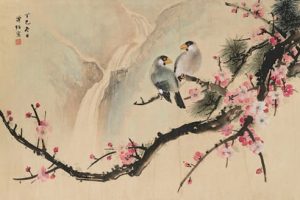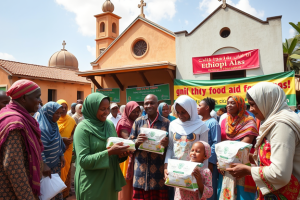
Recently, with a team of the Ethiopian Press Agency (EPA) journalists I had visited Dawro zone for media coverage. After we visited the Dawro Ethnographic Museum, which houses over 4,500 historical and traditional heritages and artifacts of Dawro people, the museum’s guide Lakew Betela advised us to visit a cultural restaurant. “If you come to Dawro, you must not miss enjoying the mouthwatering Dawro cultural foods,” Lakew convinced us. It was for the first time I visited Dawro zone’s capital, Tarcha town.
After we concluded our daily task, as per Lakew’s advice we headed to Dubusha Cultural Restaurant to have a dinner. A waiter approached us with a sunny face and a menu. Burato, Uta, Terancha, Siliso, Kochkocho, Bachira, Qaswa, Tinchowa, Tencho, Kitfo were among the locality’s famous cultural dishes listed in the menu. Except Kitfo, the dishes listed in the menu were strange to me. Though the restaurant had also foods common elsewhere, we wanted to try and know firsthand the traditional foods of Dawro and asked the waiter to brief us about the foods.
Meat, cheese, false banana, cabbage and butter seasoned with local testy spices, among others, were the top ingredients the dishes were comprised of. Though we were six we ordered for five different cultural foods.
“Oh God,” we wowed as the arrayed dishes were delicious and tasty. Especially, Siliso, which we gourmandized, was incredible. It was an amazingly delicious food. We cannot but wonder why these cultural foods are not paraded in big restaurants in the main cities.
After a while, the owner of Dubusha Cultural Restaurant, a young lady, Mulalem Gizaw joined us. We asked Mulalem about the traditional and cultural foods of Dawro. “Dubusha is Dawro people’s traditional reconciliation system and the name of the restaurant is derived from this system,” she said and added “Dawro is rich in traditional, historical, natural, cultural and manmade values. The same holds true when it comes to its delicious cultural foods. Dubusha restaurant makes Dawro’s cultural foods available for visitors and tourists thereby promoting the culture of Dawro,” Mulalem added.
Mulalem noted during the inauguration of the Halala Kella Resort it was that Dubusha Cultural Restaurant that paraded the dishes, the ‘Dine for Nation’ project launched in Dawro zone of Halala Kella area which was inaugurated last April. For Mulalem the Halala Kella project is drawing attention to and promoting the beautiful cultural traditions of the people of Dawro. As to her, Dawro has over 20 different cultural foods.
Approached by EPA, Dawro Zone Culture, Tourism and Sport Department head, Getahun Girma said “Dawro abounds in traditional, historical, cultural, manmade and natural values. Dawro’s unique wedding ceremony, Tokibea festival (Dawro New Year), Dubusha traditional reconciliation system, and its history, the King Halala Wall coupled with traditional practices affords the area a magnetic pull.
The Social construction of Dawro

Lakew Betela, Museum Director and guide within Dawro Zone’s Culture, Tourism and Sport Department said that in Dawro language, Kawteta means a traditional administrative structure equivalent with zonal administration. As to him, today’s Dawro zone was the seat of traditionally Kawteta administration.
According to Lakew, traditionally, Kawteta (province) was administered by Kawa (King of Dawro). Kawteta is made-up of seven Werabateta administrations and the Dawro king administers seven Werabatetas. The Werabateta is also made-up of seven Rashateta while one Rashateta is formed from seven Danatetas. And the Danateta was made up of seven Godatetas whereas the Godateta from seven Gudatetas. “Just like current administrative layers that stretches from kebelle to the federal level, the traditional administrative system of Dawro was stretched from Gudateta to the Kawteta level which had seven structures,” Lakew said. During the traditional administrative system, Dawro had seven main gates which were symbols of the seven administrative structures. Today, Dawro is a zonal administration with 10 districts and two municipal cities. Tarcha town is its capital.
King Halala had built a defense wall to protect Dawro from external enemies from 15th to 17th century. The wall has seven main gates and today this wall has become a tourist attraction site. The recently inaugurated Halala Kella Resort was built around one side of this wall. With these historical traditions, Dawro has a magnificent history, culture, tradition and heritages.
The Dawro Ethnographic Museum, built in line with the traditional triangular house-making style of Dawro, named Guduma Keta tells loud Dawro’s rich history. According to Lakew, the Museum comprises over 4,500 heritages. In addition to the heritages in the museum, the Halala Kella wall, the Chebera Churchura National Park (found within Dawro and Konta zones), king-making places where Kings declared their reign, hot springs, caves, traditional festivals, the Dawro New Year (Tokibea) are but to mention the prominent tourism attraction sites of Dawro, Getahun for his part said.
Culturally, Dawro has unique allurements like Tokibea (New Year festival), dressing style, own music instruments including Dinka, longest traditional wind music instrument Flute, unique traditional wedding ceremony and other beautiful traditions, as to Getahun.
Today, thanks to the Koysha cluster of ‘Dine for Nation’ initiative, Dawro’s traditional, historical, natural and manmade attractions are being promoted to allow visitors feast their eyes on. Koysha cluster Project has five sub projects three of which are within Dawro zone while the remaining two, including the recently inaugurated Elephant Paw Lodge in Chebera Churchura National Park are in Konta zone, Getahun said.
Halala Kella Resort, which was inaugurated last April, is one of the Koysha clusters while basement works are underway to bring to completion the remaining two envisaged clusters in Dawro zone. Basement works are underway in Gudumu. Boka clusters are found in Isara and Techi districts of Dawro, he stated. Koysha cluster of ‘Dine for Nation’ initiative aims to interconnect the Halala Kella cluster with the other Koysha clusters. “The Koysha Project cluster is helpful to harness, promote and unveil the untapped tourism potential of Dawro and Konta zones. It also helps to develop the infrastructural development of the zones and stimulate local tourists,” Getahun stated.
Dawro Zone Chief Administrator, Dawit Gebeyehu for his part stated that Halala Kella Lodge is an icebreaker and a game changer in Dawro tourism. It promotes the tourism potential of the zone, traditional and historical values of Dawro and the infrastructure of tourist destination sites.
“In terms of revenue, Halala Kella Resort is generating two to three million birr monthly for the zone,” Dawit said adding this income is helping the zone to fill its budget deficit. Dawit invited tourists to visit and enjoy the magnificience of Dawro.
Almost all people of Dawro are humble, cooperative, trusted, promise-keeping and ethical ones. Personally, I have enjoyed the humbleness, kindness and cordiality of the society. I recommend anyone to visit Dawro and its lovely people to enjoy the natural and traditional attractions of the area. You will have the happiest and unforgettable travel memory in your life. I hope the Dine for Nation projects of Koysha cluster will further promote the area and more people will enjoy the magnificent values, history and cultural activities of Dawro.
BY DARGIE KAHSAY
THE ETHIOPIAN HERALD FRIDAY 1 MARCH 2024





